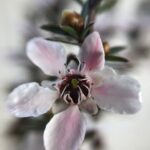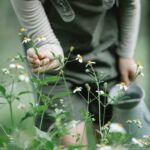A well-designed front landscape is essential for creating an inviting and visually appealing first impression of your home. When it comes to enhancing the exterior of your house, there are countless landscape ideas for the front of the house that can help you achieve a stunning result. From selecting the right plants to incorporating hardscaping elements and creating focal points, there are various aspects to consider when designing your front yard.
The front landscape serves as a preview of what lies beyond your doorstep, making it an important area to prioritize when it comes to outdoor design. This introduction will explore the key considerations for creating an attractive and functional front landscape, offering insights into assessing the space, selecting plants, incorporating hardscaping, creating focal points, maintaining seasonal interest, adding lighting, and ensuring long-term upkeep.
By understanding how to approach these different aspects of front yard landscaping, you can transform the exterior of your home into a welcoming oasis while increasing its curb appeal. Whether you’re starting from scratch or looking to revamp your existing front landscape, this guide will provide valuable suggestions and tips for elevating your outdoor space.
Assessing the Space
When it comes to implementing landscape ideas for the front of your house, it’s essential to start by assessing the available space. Understanding the size and layout of your front yard is crucial in creating a well-designed landscape that complements your home’s exterior. By taking the time to evaluate the space, you can make informed decisions about plant selection, hardscaping elements, focal points, and more.
Before diving into any landscaping project, take the time to measure your front yard area accurately. Consider factors such as the width of your yard, the distance from the curb to your house, and any areas that may have specific dimensions or limitations. By understanding these details, you can better plan and visualize how various landscape elements will fit within the space.
Another critical aspect of assessing your front yard is considering any existing features that are already in place. This includes trees, walkways, driveways, and other permanent fixtures. Take note of their locations and consider how they will influence your overall landscape design. For example, large trees may provide shade for certain plants or restrict options for hardscaping elements.
Once you have a clear understanding of the size and layout of your front yard, you can begin brainstorming specific landscape ideas for the space. Considerations such as plant selection and hardscaping elements should be influenced by this initial assessment to ensure a cohesive and visually appealing design. Taking stock of what is already present in your front yard will help guide you in making choices that work well within the existing landscape.
By carefully assessing the space available at the front of your house and considering factors such as size, layout, and existing features can help set a strong foundation for successful implementation of landscape ideas for front yards.
Plant Selection
When it comes to creating a beautiful landscape in the front of your house, plant selection plays a crucial role in achieving the desired aesthetic. Choosing the right plants can enhance curb appeal, add color and texture, and create a welcoming atmosphere. One important consideration when selecting plants for the front yard is to evaluate the climate and growing conditions in your area. This will ensure that your chosen plants will thrive and remain healthy throughout the year.
Another key aspect of plant selection is creating a cohesive and visually appealing color scheme. By coordinating different colors, textures, and heights, you can achieve an organized and harmonious look for your front yard landscape. Consider incorporating a mix of flowers, shrubs, and trees to add variety and dimension to the design. Including evergreen plants can also provide structure and visual interest during all seasons.
| Plant Type | Recommended Plants |
|---|---|
| Flowers | Tulips, Daffodils, Roses |
| Shrubs | Boxwood, Hydrangea, Azalea |
| Trees | Japanese Maple, Magnolia, Dogwood |
Keep in mind that regular pruning and maintenance will be necessary to keep your chosen plants looking their best. Additionally, consider consulting with a local nursery or landscaping professional for specific recommendations based on your region’s climate and soil conditions.
Overall, thoughtful plant selection will contribute significantly to the overall appeal of your front yard landscape. By choosing appropriate plants that complement each other well and thrive in your local environment, you’ll be on your way to creating an attractive and inviting entrance to your home.
Hardscaping
When creating a well-designed front landscape, hardscaping plays a crucial role in adding structure, functionality, and visual interest to the overall design. The right hardscaping elements can complement the softscape, create focal points, and enhance the curb appeal of your home. When considering landscape ideas for the front of the house, it’s important to explore various options for incorporating hardscaping into the design.
One popular hardscaping idea for the front of the house is to create pathways using materials such as flagstone, brick, or gravel. Pathways not only provide functional access to different areas of the front yard but also guide visitors towards your home’s entrance in an aesthetically pleasing way.
Another idea is to install retaining walls to add depth and dimension to the landscape while managing soil erosion. Retaining walls can be constructed using different materials such as stone, concrete blocks, or wood, and can also serve as seating areas or space for planting.
Incorporating decorative stones into the front landscape can also elevate its visual appeal. Whether used for creating rock gardens, defining flower beds and borders, or adding contrast in texture and color, decorative stones are versatile hardscaping elements that contribute to a polished and well-coordinated outdoor space.
| Hardscape Element | Description |
|---|---|
| Pathways | Create functional access and guide visitors towards the entrance. |
| Retaining Walls | Add depth and dimension while managing soil erosion. |
| Decorative Stones | Elevate visual appeal through texture and color contrast. |
Focal Points
Creating focal points in the front yard landscape design is essential for adding visual interest and drawing attention to specific areas. By incorporating eye-catching features, homeowners can enhance the overall appeal of their outdoor space. Here are some ideas for creating focal points in the front of the house:
- Sculptures: Consider adding a unique sculpture or art piece to the front yard. Whether it’s a modern abstract sculpture or a classic garden statue, this can instantly become a focal point and add personality to the landscape.
- Water features: Installing a fountain or a small pond can create a soothing and captivating focal point. The sound of running water adds an element of tranquility, while the visual appeal of water features can make a bold statement in the front yard.
- Architectural details: Highlighting architectural elements such as an arbor, pergola, or decorative trim on windows and doors can serve as powerful focal points. These details add character and charm to the front of the house.
In addition to these ideas, homeowners can also use creative landscaping techniques such as strategic planting arrangements or using different material textures like gravel or mulch to draw attention to specific areas. By incorporating these focal points into the front yard landscape, homeowners can elevate their curb appeal and create an inviting outdoor space.
It’s important to note that when creating these focal points, it’s essential to consider how they will interact with other elements in the front yard landscape. The placement of focal points should be intentional and complement the overall design. Furthermore, maintaining these features is crucial for long-term visual impact. Regular cleaning, maintenance, and occasional updates will ensure that focal points remain captivating throughout the seasons.
Seasonal Interest
When designing the landscape for the front of your house, it’s important to consider how to maintain visual interest throughout the year. By carefully selecting plants and other elements that provide seasonal variation, you can ensure that your front yard remains visually appealing no matter the time of year. Here are some tips for achieving seasonal interest in your front landscape:
1. Choose a Variety of Plants: Incorporating a diverse selection of plants that bloom or change color at different times throughout the year is key to creating seasonal interest. Consider including a mix of flowering plants, shrubs, and trees that offer visual appeal during each season. For example, you might select spring-blooming tulips and daffodils, summer-flowering hydrangeas, fall foliage displaying trees like maples or oaks, and evergreen shrubs for winter interest.
2. Create Seasonal Display Areas: Designate specific areas in your front landscape for seasonal displays. This could involve planting annual flowers in containers or areas where they can be easily swapped out with different varieties as the seasons change. Additionally, consider incorporating ornamental grasses or plants with attractive seed heads for added winter interest.
3. Add Seasonal Accents: In addition to plant selection, you can enhance seasonal interest by adding decorative elements that change with the seasons. For example, displaying colorful outdoor pillows on your front porch during the warmer months and switching to festive wreaths or holiday decor during winter can add visual appeal and reflect the changing seasons.
By considering these ideas for maintaining seasonal interest in your front yard landscape design, you can create a dynamic and visually engaging outdoor space that evolves throughout the year.
Lighting
When it comes to landscape ideas for the front of the house, lighting plays a crucial role in enhancing the overall design and functionality of the outdoor space. Proper lighting not only illuminates pathways and entrances but also adds an element of safety and security to the front yard.
Additionally, strategic lighting can accentuate focal points and create a welcoming ambiance for visitors. In this section, we will discuss the importance of incorporating lighting into the front landscape design and explore different types of lighting options.
Importance of Lighting
Effective lighting is essential for both practical and aesthetic reasons. Path lights, for example, help guide guests safely to your door at night, while uplights can showcase architectural features or specimen plants. Properly lit entryways also contribute to home security by eliminating dark corners that could provide cover for potential intruders. Furthermore, well-placed outdoor lighting can extend the usability of your front yard into the evening hours, allowing you to enjoy your outdoor space after sunset.
Types of Lighting Options
There are various types of outdoor lighting to consider when designing the front landscape. Path lights are ideal for illuminating walkways, while spotlights can be used to highlight trees or architectural details. Uplights cast light upwards from ground level to illuminate features like columns or façades.
In addition, decorative string lights or lanterns can add a charming touch to porches or patios. When selecting lighting fixtures, it’s important to consider energy-efficient options such as LED bulbs and solar-powered lights to minimize electricity consumption and reduce environmental impact.
By carefully choosing the right type and placement of outdoor lighting, homeowners can create a warm and inviting atmosphere in their front yard while improving safety and security aspects. With proper illumination, landscaping features are enhanced, creating a visually appealing setting that extends beyond daylight hours.
Maintenance and Upkeep
Maintaining a well-designed front landscape is crucial to ensuring its long-term success and sustainability. After all the hard work of implementing landscape ideas for the front of your house, it is important to keep up with maintenance and upkeep to preserve the beauty of your outdoor space.
One key aspect of maintenance is regular gardening tasks such as watering, weeding, and pruning. These simple activities can make a big difference in keeping your front yard looking neat and well-maintained.
In addition to regular gardening tasks, it’s important to keep an eye on the health of your plants and address any issues that may arise. This could include dealing with pests, diseases, or nutrient deficiencies. Regularly inspecting your plants and addressing any problems promptly can help prevent larger issues from developing and ensure that your front landscape continues to thrive.
Furthermore, as hardscaping elements are a key part of many front landscape designs, it’s essential to maintain these features as well. This might include cleaning pathways and retaining walls, as well as repairing any damage that may occur over time.
Proper maintenance of hardscaping elements not only keeps the front yard looking its best but also ensures their longevity and functionality in the overall design. By staying on top of maintenance and upkeep tasks, you can continue to enjoy the beauty of your front landscape for years to come.
Conclusion
In conclusion, creating a beautiful and well-designed front landscape is crucial for enhancing the overall curb appeal and welcoming atmosphere of your home. By carefully assessing the space, selecting the right plants, incorporating hardscaping elements, creating focal points, maintaining seasonal interest, and adding appropriate lighting, you can transform your front yard into a stunning outdoor space that reflects your personal style and enhances the beauty of your home.
As you embark on implementing landscape ideas for the front of your house, remember to take into account the size and layout of your front yard, as well as any existing features such as trees or walkways. Consider how different plant selections can create a cohesive color scheme and provide visual interest throughout the year. Additionally, think about how hardscaping elements like pathways and retaining walls can add structure and functionality to your front landscape.
Ultimately, maintaining and upkeeping your front landscape is essential for long-term success. Regular maintenance will ensure that your outdoor space continues to thrive and evolve over time. With these considerations in mind, we encourage you to take the first steps in transforming the front of your house into a welcoming and visually appealing landscape that you can enjoy for years to come.
Frequently Asked Questions
What Looks Good in Front of House?
The exterior of a house can greatly benefit from the addition of well-maintained landscaping, such as a manicured lawn, trimmed bushes and trees, colorful flower beds, and neatly defined walkways. Symmetry and balance in the design can also enhance the overall look of the house’s front yard.
How Do I Make My Front House Landscape?
To create an appealing front house landscape, consider starting with a plan that incorporates elements such as flower beds or container gardens, hedges or shrubs for privacy and greenery, a well-kept lawn, and decorative accents like outdoor lighting or a welcoming porch area.
It’s important to maintain the landscape by regular watering, fertilizing, weeding, and pruning to keep it looking its best.
How Do You Landscape a Small Front Porch?
When landscaping a small front porch, it’s important to focus on maximizing the available space while maintaining functionality. Consider using potted plants or hanging baskets to add greenery without taking up precious floor space.
Utilize small furniture pieces like chairs or benches that can comfortably fit within the space without overcrowding it. Spruce up the porch with decorative accents like outdoor rugs or pillows to add personality without overwhelming the area.

Welcome to my gardening blog! I am passionate about plants and enjoy sharing my knowledge and experiences with others. In this blog, I will write about everything related to gardening, from tips on how to get started to updates on my own garden projects.





